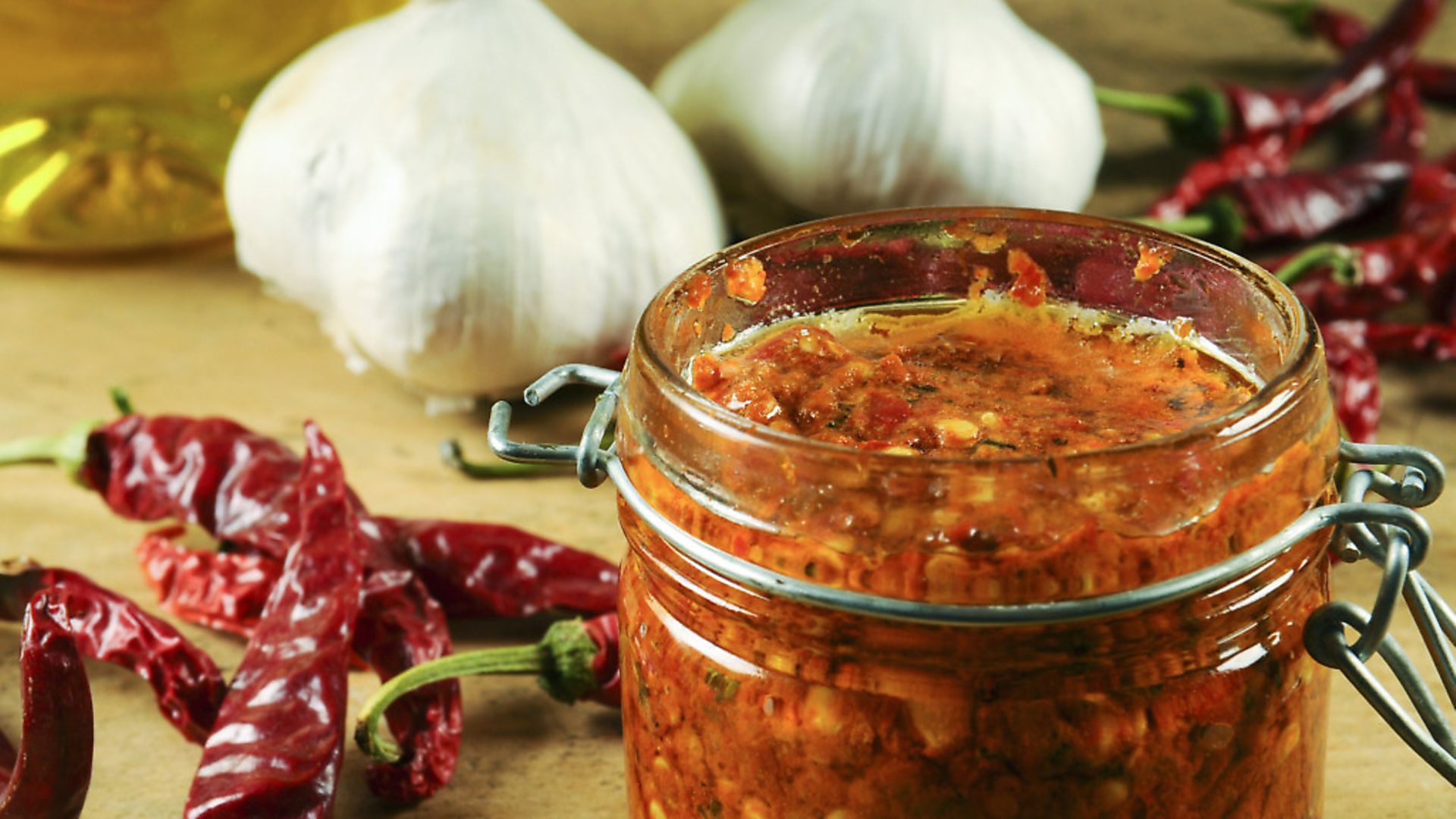
Spiced sauces are a constant in my life, whether it’s the go-to Caribbean Encona Pepper Sauce at the back of the cupboard, the perennial Tabasco or any other hot sauce with the magical ability to elevate even the most modest cheese sandwich to the higher echelons of eating.
I suppose the bar is set differently for those that have grown up surrounded by any and every manner of pickle and chutney. While the hinterland of bland that typifies most ‘British’ food will always be elevated with spice, the food I was fed by my grandmother and mother already conveyed spiciness.
For me, the challenge was to add nuance to the heat, to find texture within the already burgeoning palate of mouth-enlivening flavours.
One of the most intriguing, one of the most enigmatic of all spicy sauces has to be harissa. There’s a sweet complexity to this North African marvel that asks so many questions of the palate. And while any half-]decent couscous dish cries out for harissa it can equally be applied outwith the disciplines of North African cooking. Smeared on a Sunday roast, on grilled fish or in a cheese and tomato sandwich, harissa is a friend you need to get to know.
Serves 6
Ingredients
100g of dried chilli peppers of your choice
1 teaspoon of caraway seeds
1 teaspoon of coriander seeds
1 teaspoon of cumin seeds
3 to 4 garlic cloves, peeled
1 teaspoon of kosher salt, or to taste
2 tablespoons of extra virgin olive oil, plus more for storing
Optional additions: fresh lemon juice, preserved lemon, fresh or dried mint, fresh cilantro, sun-dried tomatoes, tomato paste, cayenne, paprika
Method
First off you have to soften the chilli peppers. This is easily done by covering them in boiling water and allowing to stand for half an hour.
Utilise this time by toasting off your spices.
In a dry skillet over a medium heat, toast the caraway, coriander, and cumin occasionally shaking or stirring to prevent burning.
When the spices are fragrant, remove them from the pan.
While still hot grind the spices in a mortar and pestle.
Once the chillies are beautifully malleable, drain them, reserving the liquid.
Remove the tops, and you may choose to de-seed; I won’t judge you (I will).
Now blend the chillies, ground spices, garlic, and salt in the bowl of a food processor.
With the food processor running, slowly drizzle in the olive oil and process to form a smooth and thick paste.
Scrape down the sides of the bowl occasionally.
If a thinner paste is desired, blend in a little of the chilli-soaked liquid until the paste has reached your desired texture.
Taste and adjust seasonings.
Like all great sauces of this nature, the flavour of the harissa will deepen over the next day or two, but you can taste it now and add more salt or other optional ingredients to your liking.
Transfer the harissa to a jar and cover the surface with a thin layer of olive oil. Cover the jar and refrigerate for up to a month, adding a fresh layer of olive oil on the top each time you use the harissa.
Warning: Illegal string offset 'link_id' in /mnt/storage/stage/www/wp-includes/bookmark.php on line 357
Notice: Trying to get property 'link_id' of non-object in /mnt/storage/stage/www/wp-includes/bookmark.php on line 37






